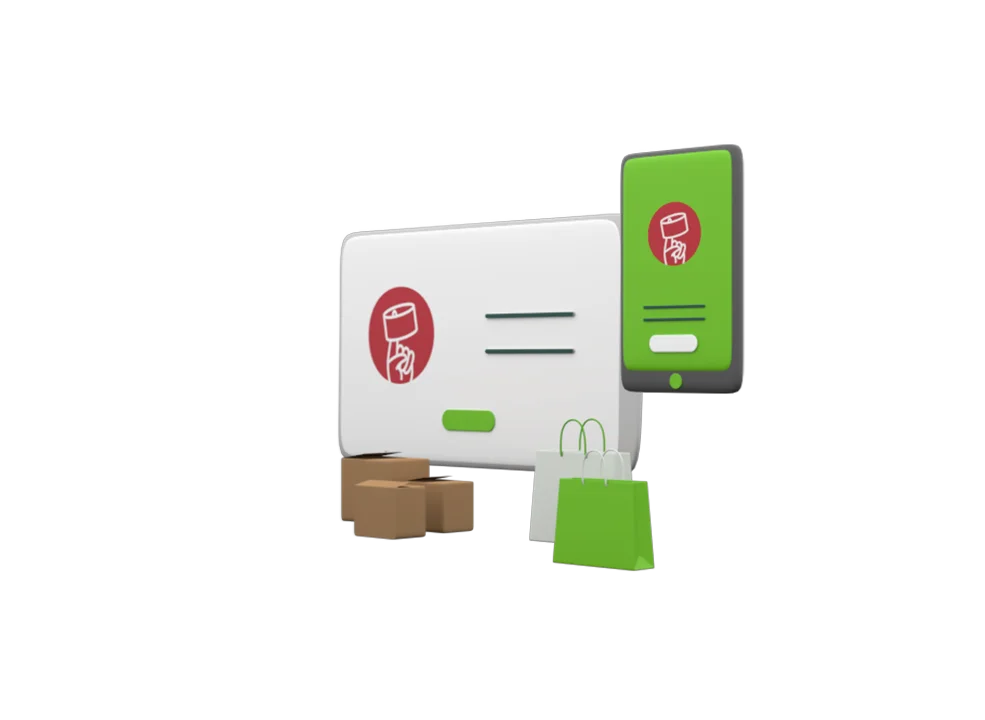How OMS and Web Store Integration Support B2B and B2C Operations Simultaneously

Businesses juggling both B2B and B2C models face unique circumstances. B2B operations demand tailored solutions, reliable bulk fulfillment, and precise inventory management. Meanwhile, B2C customers expect swift deliveries, personalized shopping experiences, and real-time updates. The challenge grows when these systems operate in silos, creating misaligned workflows, inventory inaccuracies, and dissatisfied customers.
Disconnected systems create inefficiencies that hinder business growth. Think of a scenario where your inventory system doesn’t update the web store in real time. For a B2C customer, this could mean purchasing an out-of-stock item, leading to frustration and loss of loyalty. For B2B clients, it could mean delayed fulfillment of high-value bulk orders, jeopardizing long-term relationships.
An integrated ecosystem comprising an Order Management System (OMS), Warehouse Management System (WMS), and web store can address these inefficiencies. These technologies allow businesses to simplify inventory tracking, optimize fulfillment processes, and ensure consistent customer experiences across both models.

Unify B2B and B2C management with the best OMS, WMS, and web store integration software.
Key Differences in B2B and B2C Operations
While both B2B and B2C operations involve selling products and fulfilling orders, their underlying mechanics are vastly different. These differences require distinct yet unified approaches to management.
Customer Expectations and Behavior
B2B customers are typically businesses that prioritize long-term reliability, volume discounts, and consistency. They often have established purchasing patterns and expect tailored solutions, such as custom pricing and scheduled deliveries.
In contrast, B2C customers make purchases based on personal preferences, trends, or impulse decisions. Their expectations revolve around convenience, speed, and personalization.
Order Volumes and Fulfillment
The volume of orders in B2B is generally larger, with recurring bulk orders forming a significant portion of the sales. Fulfillment processes are structured to handle pallet-sized shipments and scheduled deliveries.
B2C orders, however, come in smaller volumes but at higher frequencies. During sales events or seasonal peaks, businesses might handle thousands of individual orders daily, requiring fast and accurate picking, packing, and shipping.
Invoicing and Payment Terms
B2B transactions involve complex invoicing processes, including credit terms, purchase orders, and approvals from multiple stakeholders. B2C payments are typically straightforward, using online payment methods with no credit terms.
Given these differences, a one-size-fits-all solution is inadequate. Businesses must deploy systems that can cater to the specific needs of each model while maintaining operational harmony.
The Role of OMS in Bridging B2B and B2C Needs
An Order Management System (OMS) connects various channels to provide effortless order processing. For businesses that serve both B2B and B2C markets, an OMS plays a pivotal role in unifying diverse requirements by providing real-time visibility into inventory across multiple locations. If any order comes in, whether it is from a B2B customer or from a B2C customer, the required quantity is reduced and displayed on the sales channel (in this case the webstore of the omnichannel retailer). This minimizes the risk of overselling, stockouts, or customer dissatisfaction by ensuring that stock levels are accurately reflected across channels. For B2B operations, the OMS reserves inventory in the warehouse (if possible), against the specific sales orders.
In B2C scenarios, an OMS intelligently routes orders to the nearest warehouse or fulfillment center (dark or normal store), optimizing delivery times. Again, in the case of consumer orders (B2C orders), it tries to reserve the inventory at the fulfilment location. This adaptability makes an OMS indispensable for unifying diverse requirements across both models.

Simplify bulk orders and individual purchases effortlessly with a centralized OMS for all sales channels.
The Role of WMS in Unified Order Fulfillment
Traditionally associated with wholesale order management, the Warehouse Management System (WMS) has evolved to address the dynamic needs of e-commerce-driven B2C operations. A modern WMS ensures that both B2B and B2C orders are fulfilled accurately and efficiently in the following ways:
- Real-Time Inventory Management: A robust WMS maintains an accurate picture of inventory across warehouses. This is critical for both models—B2B clients need assurance that their large orders can be fulfilled, while B2C customers demand accurate stock information to avoid disappointment.
- Optimized Picking Processes: For B2B orders, the WMS facilitates bulk picking and pallet-level shipments, streamlining the process for large-scale deliveries. For B2C, it supports batch picking of multiple smaller orders, a necessity during high-demand periods.
- Easy Integration with Logistics: The WMS integrates with courier companies and logistics aggregators to automate the shipping process. This includes generating shipping labels, updating tracking information, and ensuring that both B2B and B2C customers receive timely updates.

Web Store Integration: The Gateway to Unified Commerce
The brand web store or brand ecommerce site, is a critical touchpoint for both B2B and B2C customers, acting as the primary interface for browsing products, placing orders, and managing accounts. Brands may choose separate storefronts for B2B and B2C operations or rely on third-party B2B ordering apps, but integration with OMS and WMS is key to unifying these channels seamlessly.
A web store integration with OMS and WMS achieves:
- Real-Time Inventory and Pricing Updates: Integrated systems ensure accurate inventory levels and dynamic pricing updates across channels. For B2C customers, this means a consistent shopping experience with up-to-date stock availability. For B2B clients, it guarantees visibility into bulk inventory and pricing differentiation based on contractual agreements, volume, or client-specific catalogs.
- Order Tracking and Account Management: Integration simplifies order tracking, enabling both segments to monitor order statuses in real time. Customer account management becomes effortless, ensuring accurate records of past orders, payments, and preferences for B2B clients and B2C shoppers alike.
- Personalization in Customer Experiences: For B2C, web store integration supports personalized recommendations, customer-specific pricing, and loyalty programs. For B2B, it enables client-specific catalogs, automated pricing tiers, and contract-based discounts.
- Optimized Order Fulfillment: OMS and WMS integration ensures that inventory updates flow smoothly between the web store and warehouse, whether the store fronts are shared or separate. This minimizes unfillable orders due to zero inventory. The WMS supports distinct pick, pack, and ship processes for bulk B2B orders and individual B2C shipments while integrating with courier companies or logistics aggregators to enhance delivery efficiency.

Achieve real-time inventory accuracy and faster deliveries with smart order routing and fulfillment integration.
Key Benefits of OMS, WMS, and Web Store Integration Software for B2B Operations
Integrating OMS, WMS, and web store platforms addresses the complexities of B2B operations by effortlessly managing bulk orders and recurring demands. This includes key benefits such as:
- Inventory Allocation: B2B clients depend on guaranteed stock availability for recurring or large orders. Integration ensures real-time inventory updates, minimizing risks such as stockouts and making timely fulfillment possible.
- Automated Pricing Tiers: B2B pricing often involves volume-based discounts or contract-specific rates. Integration automates these tiers, thus ensuring consistent and accurate pricing for clients.
- Bulk Fulfillment: Handling large B2B orders require efficient, simplified processes. Integrated systems align OMS and WMS to optimize order picking, packing, and dispatching, ensuring timely deliveries.
- Client Communication: Integrated platforms provide personalized catalogs, order histories, and real-time updates, enhancing trust and positioning the business as a reliable partner.
The Cons: Operating Without Integrated Systems
Operating without an OMS, WMS, and web store integration software can lead to challenges that hinder efficiency, accuracy, and customer satisfaction. Disconnected processes leave businesses open to operational inefficiencies and poor customer experiences.
- Inventory Discrepancies: Disconnected systems often cause mismatched stock data, resulting in overselling, understocking, and fulfillment issues. These errors damage customer trust and operational reliability.
- Inefficient Workflows: Manual processes for order management and fulfillment slow operations and increase errors. Delays, mismatched orders, and higher costs become frequent challenges.
- Customer Dissatisfaction: Inconsistent experiences, such as delays or inaccurate pricing, frustrate both B2B and B2C customers. This leads to reduced loyalty, negative reviews, and revenue losses.
- Limited Scalability: Siloed systems struggle with growing order volumes or diverse needs, restricting business growth and efficiency.

Improve inventory visibility and eliminate overselling risks with a unified OMS-WMS-web store setup.
Unify B2B and B2C Operations with Ginesys One Suit
Ginesys One’s comprehensive ERP solution integrates OMS, WMS, and web store functionalities to create a unified ecosystem for businesses managing both B2B and B2C operations.
Centralized Order Management
Browntape, the Ginesys One order management system, supports the full order lifecycle with real-time inventory visibility across channels. It enables businesses to confidently promise product availability and optimizes delivery by routing orders to the nearest warehouse or store.
Efficient Warehouse Management
The WMS module inbuilt in Ginesys ERP aligns inventory and warehouse workflows for both B2B and B2C needs. It ensures accurate stock allocation for recurring B2B orders and speeds up B2C order fulfillment with batch processing and location intelligence, maintaining real-time stock updates.
Web Store Integration Software
Ginesys One synchronizes inventory, pricing, and customer accounts across web stores and offline channels, ensuring consistency for B2B and B2C customers. Its endless aisle capabilities at POS enable in-store staff to locate and reserve inventory network-wide, while automation supports bulk invoicing and real-time transaction tracking.
Automation for Accuracy
By automating payment reconciliation, invoice matching, and ledger adjustments, businesses can minimize manual errors and save time. Its ecommerce reconciliation module provides real-time visibility into payments, ensuring smooth operations for both B2C transactions. The integrated finance module of Ginesys ERP keeps track of B2B customer outstanding.
As customer expectations grow, businesses must adopt integrated solutions to thrive. Combining OMS, WMS, and web store capabilities empowers businesses to efficiently manage the complexities of both B2B and B2C operations.
Ginesys One unifies order management, warehouse workflows, and omnichannel integration into a single, powerful solution. Take the next step toward operational excellence and discover how Ginesys can transform your business into an omnichannel leader. Schedule a demo today!
